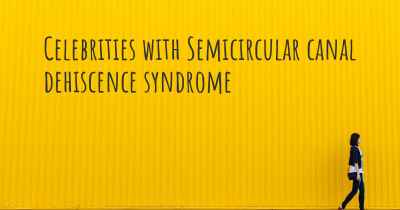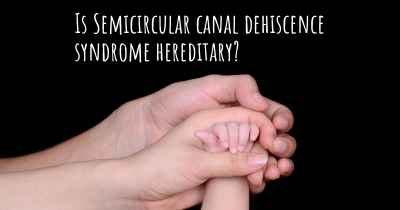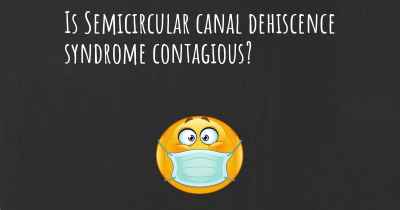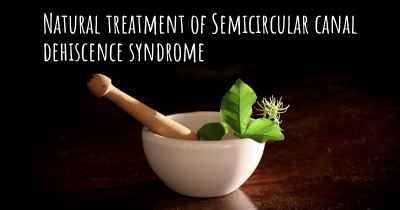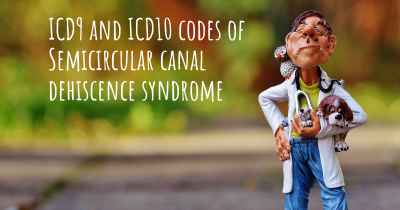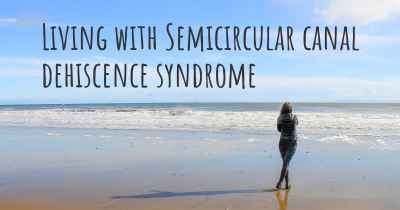What is the life expectancy of someone with Semicircular canal dehiscence syndrome?
Life expectancy of people with Semicircular canal dehiscence syndrome and recent progresses and researches in Semicircular canal dehiscence syndrome
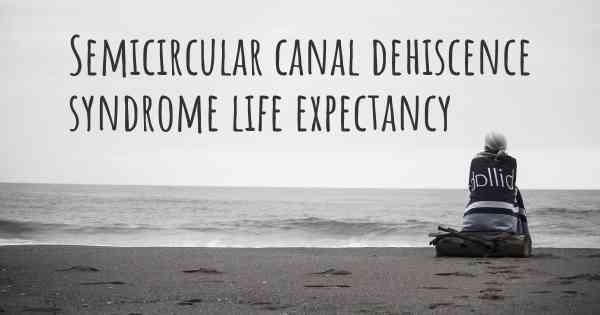
Semicircular canal dehiscence syndrome (SCDS) is a rare condition where a person's inner ear has a thin or absent part of the bone covering the semicircular canals. This can lead to various symptoms such as dizziness, hearing loss, and sensitivity to certain sounds.
The life expectancy of someone with SCDS is not directly affected by the condition itself. SCDS is a chronic condition that can be managed through various treatment options, including medication, lifestyle changes, and in some cases, surgery. With proper management, individuals with SCDS can lead a normal life expectancy.
It is important for individuals with SCDS to work closely with their healthcare providers to develop a personalized treatment plan and address any concerns or symptoms they may experience.
Semicircular canal dehiscence syndrome (SCDS) is a rare medical condition that affects the inner ear. It is characterized by a thinning or complete absence of the bone that covers the semicircular canals, which are responsible for detecting rotational movements of the head. This condition can lead to a variety of symptoms, including dizziness, vertigo, hearing loss, and aural fullness.
The life expectancy of someone with SCDS is not directly affected by the condition itself. SCDS is a chronic condition that can be managed with appropriate treatment and lifestyle modifications. However, the impact of SCDS on an individual's quality of life can vary significantly depending on the severity of symptoms and the effectiveness of treatment.
Treatment options for SCDS aim to alleviate symptoms and improve the patient's overall well-being. The most common treatment approach is surgical repair of the dehiscence, which involves sealing the hole in the bone covering the affected semicircular canal. This procedure can provide significant relief from symptoms in many cases.
It is important to note that the success of surgical treatment may vary from person to person. Some individuals may experience complete resolution of symptoms, while others may still have some residual symptoms even after surgery. Additionally, there is a small risk of complications associated with the surgical procedure, such as hearing loss or damage to the facial nerve.
Non-surgical management options are also available for individuals who are not suitable candidates for surgery or prefer a conservative approach. These may include lifestyle modifications, such as avoiding triggers that worsen symptoms (e.g., loud noises, certain head movements), and using assistive devices like hearing aids or vestibular rehabilitation therapy.
It is important for individuals with SCDS to work closely with their healthcare providers to develop an individualized treatment plan that addresses their specific needs and goals. Regular follow-up appointments are typically recommended to monitor symptoms, assess treatment effectiveness, and make any necessary adjustments to the management plan.
While SCDS can significantly impact an individual's quality of life, it is not a life-threatening condition in itself. With appropriate management and treatment, individuals with SCDS can lead fulfilling lives and have a normal life expectancy. It is important to prioritize self-care, manage stress levels, and seek support from healthcare professionals and support groups to cope with the challenges associated with SCDS.
In conclusion, SCDS is a chronic condition affecting the inner ear that can cause a range of symptoms. The life expectancy of someone with SCDS is not directly affected by the condition itself. With appropriate treatment and management, individuals with SCDS can lead fulfilling lives and have a normal life expectancy. It is crucial to work closely with healthcare providers to develop an individualized treatment plan and prioritize self-care to effectively manage the symptoms and improve overall well-being.
